With all due respect to the physical abode around me, I practically live inside Google's Chrome browser. Chrome is where I spend most of my days, during the week, at least — keeping up with all the latest tech info, using web-based apps like Trello, Docs, and Gmail, and watching the occasional video over on the Ye Ol' YouTubes (always strictly work-related, of course).
At this point, I've got Chrome set up just the way I like it — with all sorts of custom shortcuts, crafty settings, and a carefully refined set of environment-enhancing extensions. The browser serves as a bridge between my various devices, both computers and phones, and makes it easy as can be for me to send text and links between 'em and find anything I've opened anywhere, anytime.
It works so incredibly well for me — and yet, I can't help but feel the lure of another suitor, one that's both comfortingly familiar and tantalizingly new.
I'm talking about Firefox, a browser I knew inside and out long before Chrome came along as the hot young thang and enticed me away many moons ago. The Firefox of today is a very different beast from that browser of yesteryear, though, and on Android in particular, it's rapidly evolving into something quite intriguing.
I've been spending some time using the latest preview build of Firefox's long-under-development revamped Android app, and lemme tell ya: It's pretty darn good. And in many ways, it makes Chrome feel like the rusty old relic that Firefox once became.
Now, mind you, I'm not giving up on Google's browser yet. Chrome is constantly evolving, and I'm heavily invested in the ecosystem around it. But on Android, at least, I'm finding myself going back and forth more and more between it and Firefox. And the more I use Firefox, the more I find myself enjoying the experience.
Right now, Mozilla — the parent organization behind Firefox — has way too many overlapping versions of its Android browser, and it's practically impossible to figure out which is what. The "new" version of Firefox, though, is currently called Firefox Preview, and it's the one you want to try out for the moment if you're looking to get a relatively stable yet reasonably current view of what's in the works.
Eventually, all the new elements from that app will make their way into the main Firefox Android app, and it'll become advisable to switch to that — but for now, the preview version is the place to go for the good stuff.
But enough big-picture yimmer-yammer. Here, specifically, are six reasons I'm enjoying the new Firefox Android experience — and why I'd suggest you give it a whirl as well and consider it as an occasional Chrome supplement, if not something more:
1. The new Firefox preview is fast. Like, crazy fast.
On the desktop front, there are simple steps you can take to speed up Chrome and make it more efficient. On the mobile front, though, most of those possibilities aren't present.
Well, guess what? In Firefox, they're built right in. By default, the new Firebox Android app blocks a whole host of web-based trackers — which makes web pages load meaningfully faster, especially on sites (cough, cough) that are rather bloated with over-the-top scripts and ads (awkward eye darting).
Scrolling through such sites in Chrome and then doing the same in Firefox is a night and day difference. It's immediately noticeable, and once you get used to the Firefox fast lane on your phone, it's a teensy bit tough to go back.
And on a related note...
2. The Firefox Android app has built-in tools for privacy protection.
For a while now, I've been suggesting Mozilla's Firefox Focus Android app as the easiest and most effective way to crank up your privacy for phone-based web browsing. While that app still exists and remains quite commendable, though, its same capabilities are built right into the new Firefox Preview app (and the plan seems to be for Focus to eventually be phased out in its favor).
In addition to the built-in tracker blocker we were just talking about — which you can configure to suit your own preferences, by the way, with a thorough set of options for how heavy-handed its blocking should be — the preview app has Focus-like features such as the ability to automatically delete any or all of your browsing data every time you exit the app (something Focus does fully by default).
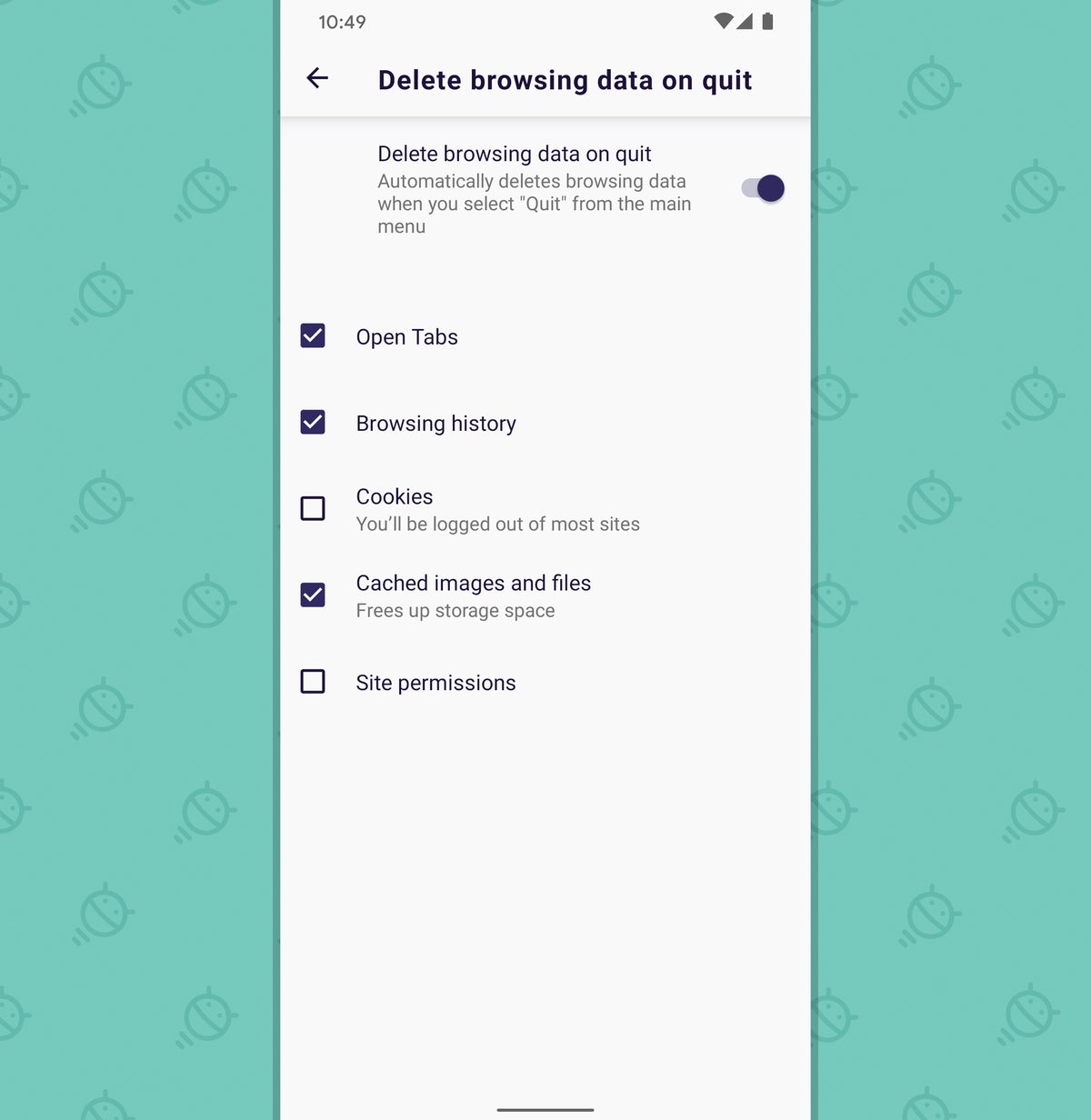 JR
JRAnd there's one more noteworthy possibility that ties into that same front.
3. The new Firefox has some interesting extension potential.
Taking a cue from desktop browsers, Firefox's latest Android effort is being built with support for user-selected extensions in mind. For now, as of the latest preview build released this week, only one extension is available — but it's something that's quite relevant to our current conversation: uBlock Origin, the enhanced script-blocking extension that's popular on the desktop and incredibly effective at increasing privacy while decreasing page load times (even more so than Firefox's built-in mechanisms by themselves).
Long-term, Mozilla says it plans to migrate more extensions from its Recommended for Android collection so they'll be available within the new browser. That list is dominated by privacy- and security-centric titles, including other script-blocking utilities along with smart add-ons such as the Electronic Frontier Foundation's HTTPS Everywhere extension, which forces an encrypted connection even on sites that don't offer that by default.
4. The latest Firefox preview has some handy built-in features, too.
Foundational stuff aside, the new Firefox Android app has a handful of native features that stand out to me as being especially useful.
There's a single-switch Reader View, for example, which strips away extraneous elements and transforms any article into a pleasant reading experience — one where you can even control the size and style of the text along with the page's color scheme, if you're so inspired.
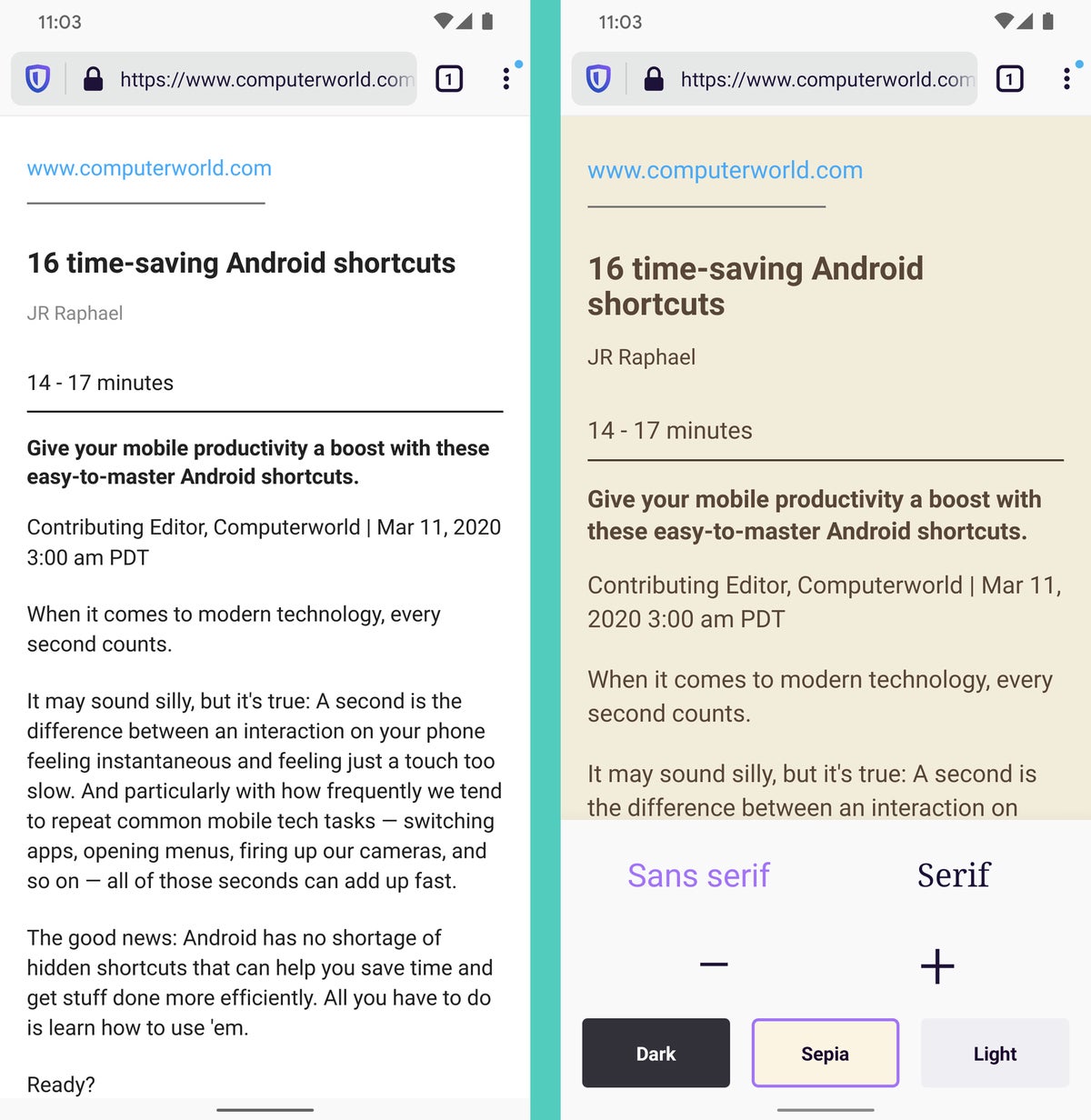 JR
JROn Chrome, the closest equivalent to that is awkwardly buried, far more limited, and in constant danger of being deprecated.
Another tool I've come to appreciate is Firefox's built-in Collections feature. Anytime you're viewing a page, you can tap the app's menu icon and select "Save to Collection," then add the page into a group with whatever name you want. Your collections then show up in the tab management screen, along with the general overview of your presently open pages.
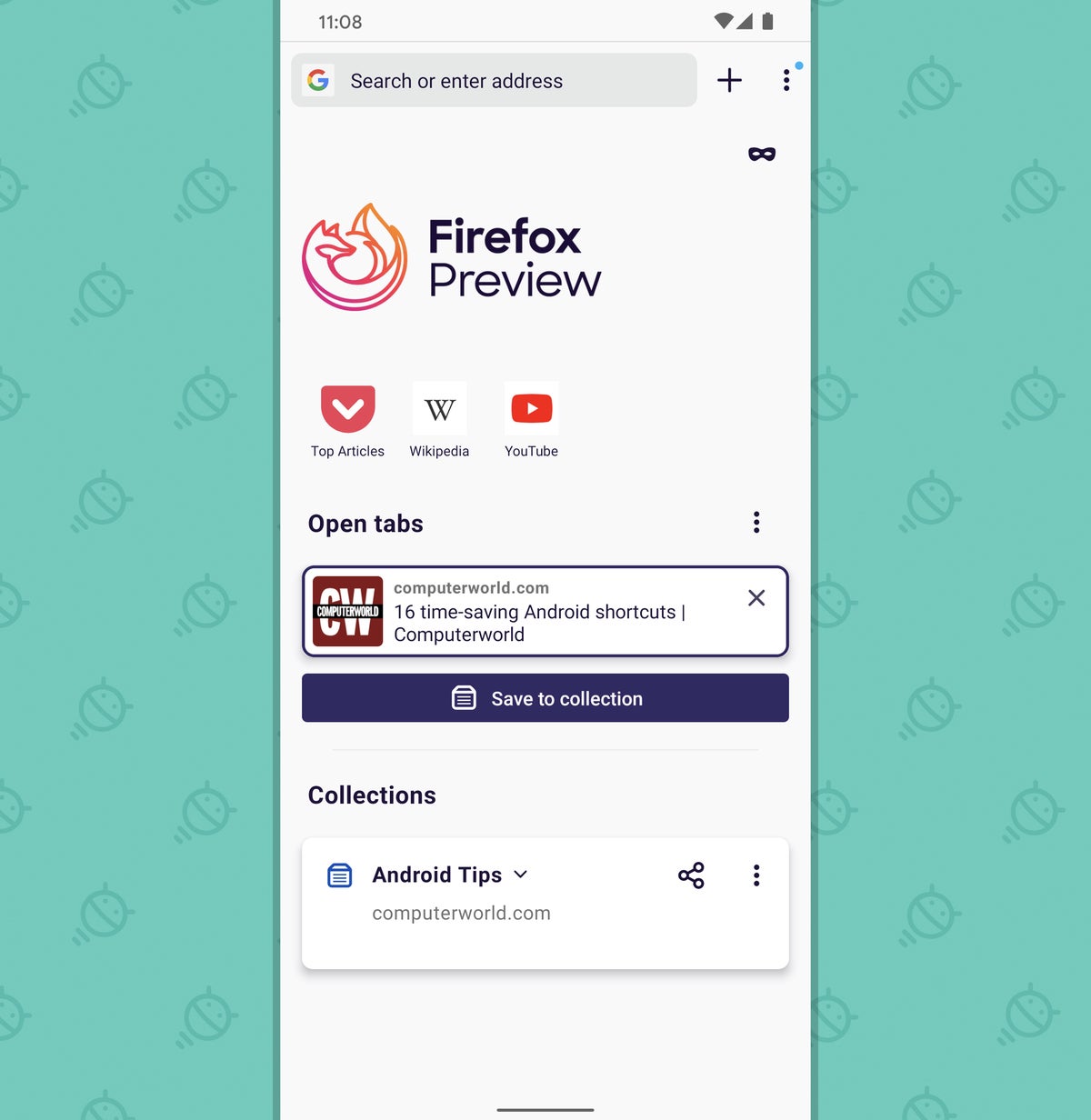 JR
JRIt's a strikingly simple and sensible way to organize tabs and hang onto stuff for later reference — and it's something Google's been struggling to get right in Chrome for a while.
The Firefox Preview app even lets you decide whether you'd rather have its main toolbar on the top or the bottom of the browser, as opposed to Chrome's one-size-fits-all (with that size shifting slightly every few weeks, it seems) approach.
5. Firefox's Android app has a genuinely helpful cross-service searching system.
Google's great for finding information, but sometimes, you want to search another source — be it an alternative search engine or a specific sort of site like Amazon or Twitter.
While Google isn't keen on making it particularly easy to search external places (without flat-out changing the entire browser's single default search provider), Firefox makes it delightfully simple to do just that: Anytime you tap the app's address/search bar, you're presented with a list of choices. You can just start typing and search in Google, by default, or you can tap one of the other options and search directly in that service from that same spot — without having to make any lasting change to the browser's default behavior:
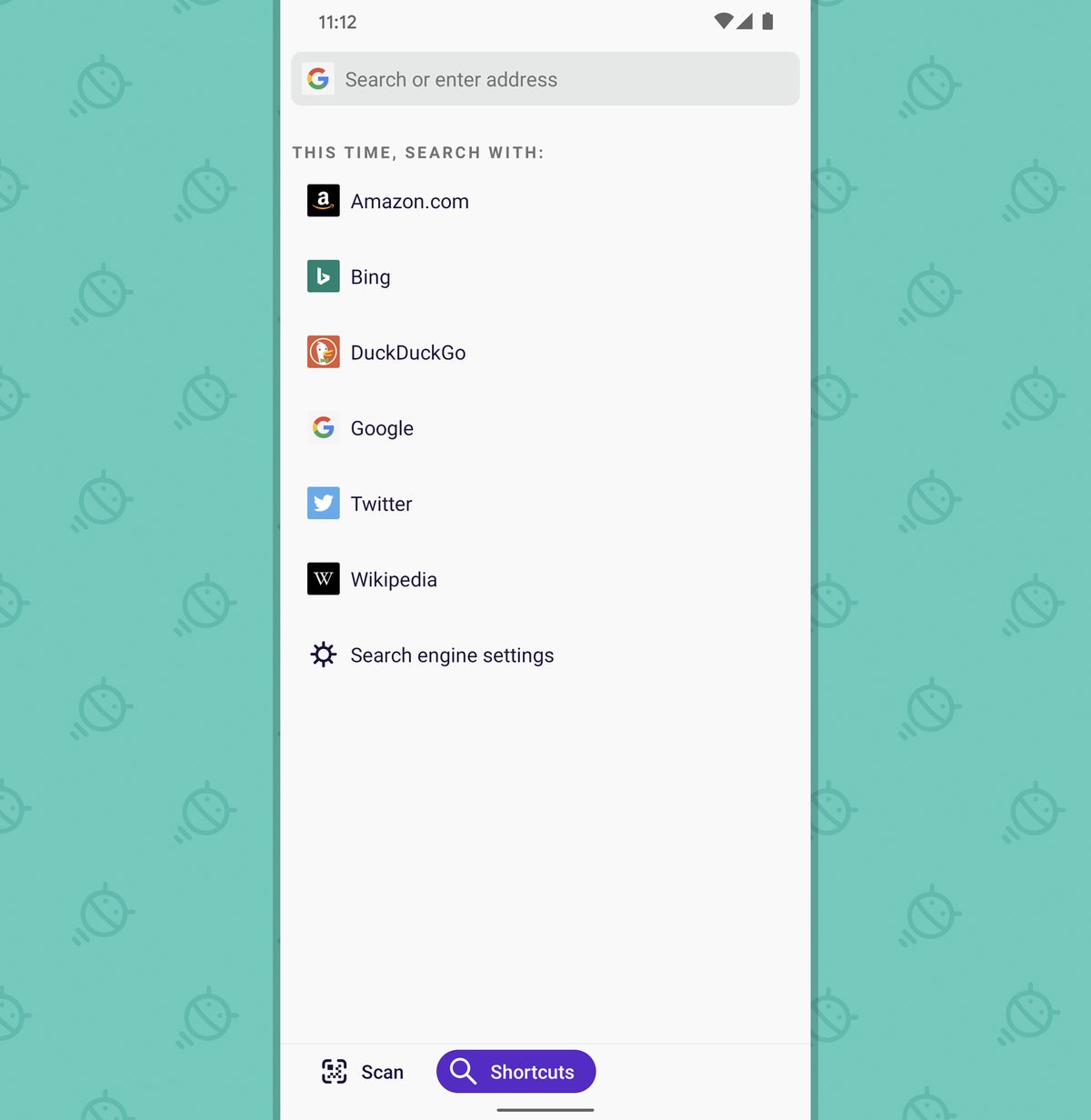 JR
JRYou can even add your own custom search engines into that same area, just like you can on most desktop browsers.
 JR
JRHaving that sort of flexibility from your phone is pretty forkin' useful, if you ask me — one of those things you quickly start to take for granted and then realize you miss when it's no longer there.
6. Firefox on Android is familiar.
Despite all these differences, what makes Firefox particularly pleasant to use on the Android front is the fact that it looks and feels — well, an awful lot like Chrome.
I mean, look for yourself:
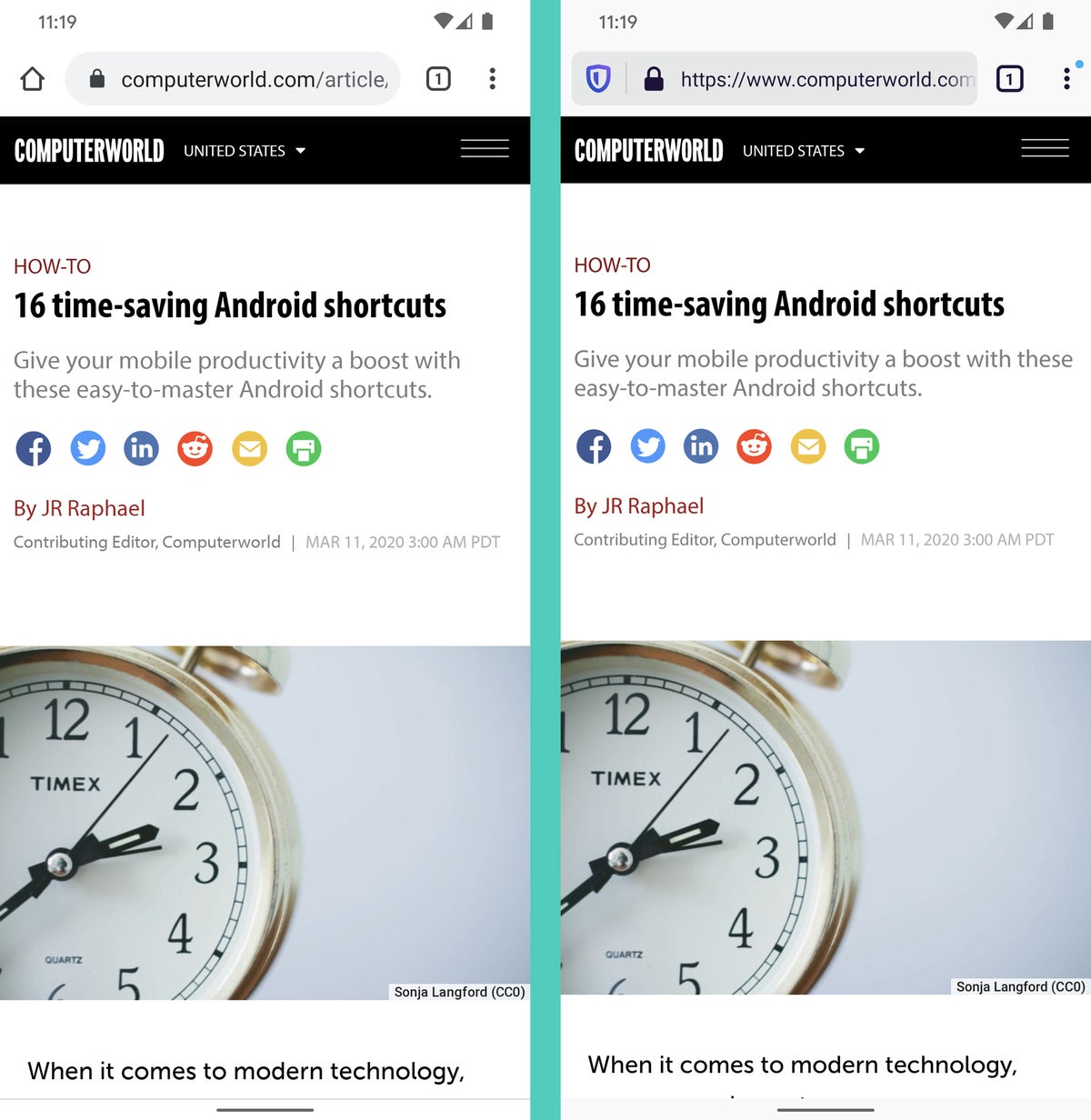 JR
JRThat's Chrome on the left and Firefox on the right. You really have to look closely to spot the differences, don't you?
Even the apps' menus are eerily similar in style:
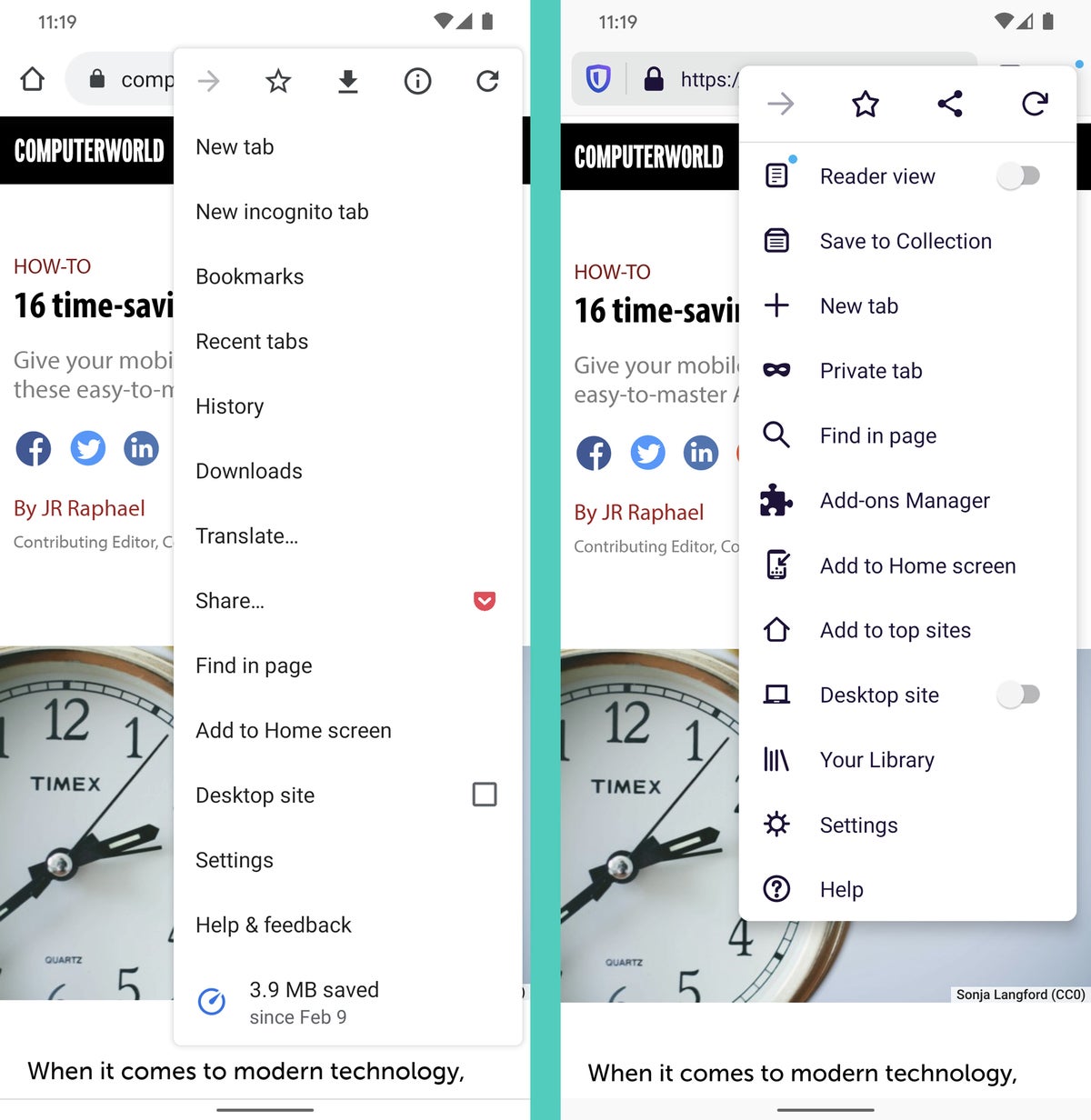 JR
JRThat means the adjustment of moving from Chrome to Firefox and vice-versa is generally pretty minimal. There are some areas that don't entirely line up, like Firefox's lack of tab-swiping shortcuts, but by and large, you don't even think about the fact that you're using something different.
All in all, there's an awful lot to like about this latest Firefox Android effort — and the app isn't even finished yet. Whether you ultimately decide to use the Firefox preview as a full-fledged Chrome replacement or just an occasional alternative, it's well worth checking out and keeping a close eye on as its development progresses.
Sign up for my weekly newsletter to get more practical tips, personal recommendations, and plain-English perspective on the news that matters.

"try" - Google News
March 12, 2020 at 11:08PM
https://ift.tt/2U45nAc
6 big reasons to try the new Firefox Android preview - Computerworld
"try" - Google News
https://ift.tt/3b52l6K
Shoes Man Tutorial
Pos News Update
Meme Update
Korean Entertainment News
Japan News Update
Bagikan Berita Ini














0 Response to "6 big reasons to try the new Firefox Android preview - Computerworld"
Post a Comment